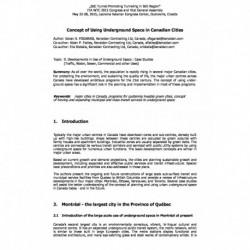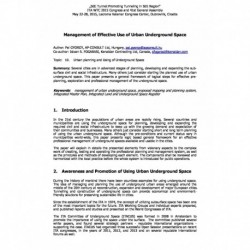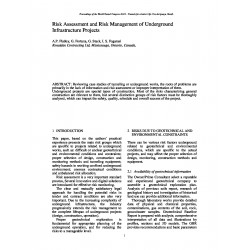No document
Search & filter
Search for a publication
Search & filter
List of products by author: I. S. Fogarasi
-
Concept of Using Underground Space in Canadian Cities
Abstract: Typically the major urban centres in Canada have downtown cores and sub-centres, densely built up with high-rise buildings. Areas between these centres are occupied by green suburbs with family houses and apartment buildings. Industrial zones are usually separated by green belts. The centres are connected by various transit corridors and serviced with public utility systems by using underground...
0,00 € -
Management of Effective Use of Urban Underground Space
Abstract: In the 21st century the populations of urban areas are rapidly rising. Several countries and municipalities are using the underground space for planning, developing and expanding the required civil and social infrastructure to keep up with the growing demand and expectation of their communities and businesses. Many others just consider starting short and long term planning of using the urban...
0,00 € -
Pre-planning Methods for the Best Use of Urban Underground Space (UUS)
Abstract: Several cities are in advanced stages of planning, developing and expanding the sub-surface civil and social infrastructure. Many others just consider starting the planned use of UUS (urban underground space). This paper presents a general framework of logical steps for effective pre-planning, exploration and professional management of the underground space. The paper will explain in details...
0,00 € -
Risk Assessment and Risk Management of Underground Infrastructure Projects
Abstract: Reviewing case studies of tunneling or underground works, the roots of problems are primarily in the lack of information and risk assessment or improper interpretation of them. Underground projects are special types of construction. Most of the risks characterizing general construction are relevant to them, but several distinctive groups of risk factors must be thoroughly analyzed, which can...
0,00 €




